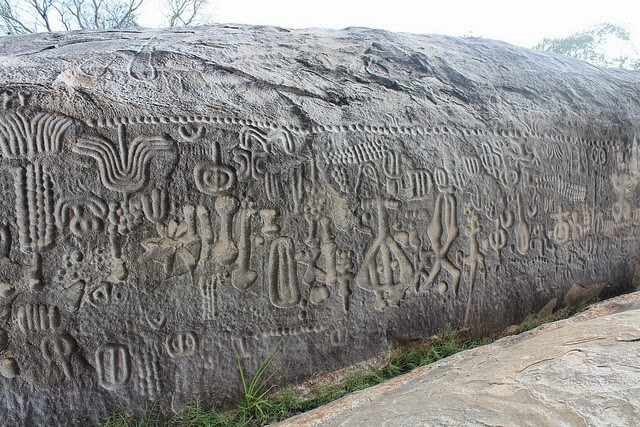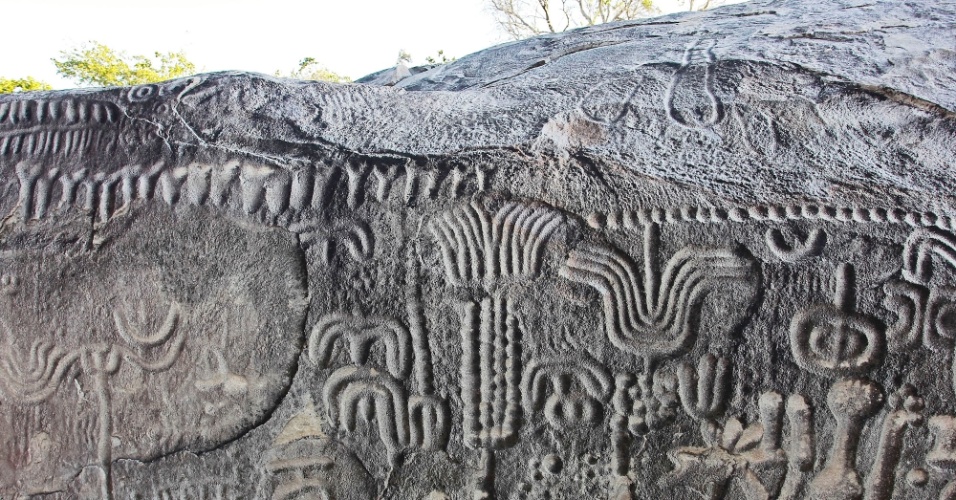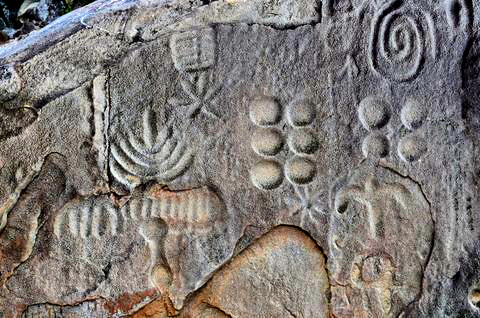Its most prominent symbols depict stars, the Milky Way as well as the constellation of Orion.Most glyphs etched on the massive stone represent animals, fruits, humans, constellations, but also a plethora of yet unrecognizable symbols and images.
Its most prominent symbols depict stars, the Milky Way as well as the constellation of Orion.

There’s a strange, massive stone located in the municipality of Ingá, in the interior of the Brazilian state of Paraíba called the Inga stone or Pedra do Inga.
On its surface, the ancients carved a series of intricate symbols, stars, and spirals.The stone itself is massive; the rock formation covers an area of approximately 250 square meters.
Altogether primary, a vertical wall 46 meters long by 3.8 meters high, and adjacent areas, there are entries whose meanings are unknown.
In addition to the stars, and spirals, ancient ‘astronomers’ carved other entries whose exact meanings remains a mystery to experts.
Despite this, scholars have agreed on the fact that depictions of stars, constellations, and even galaxies are clearly visible on the rock’s surface.

While the exact age of the inscriptions is hard to tell, researchers argue that the rock formation can be dated back to around 6,000 years.
So far, experts have identified more than 400 engravings on the stone’s surface. Some of them are zoomorphic in nature, while others represent abstract symbols as well as stars.
There is a hypothesis that indicates the petroglyphs of Ingá are exceptionally important from an archaeoastronomical point of view.

Back in 1976, Spanish engineer Francisco Pavía Alemany began mathematically studying the archaeological monument.
His first results were published in 1986 by the Instituto of Arqueologia Brasileira (Pavía Alemany F. 1986). Alemany identified on the stone’s surface a series of “bowls” and another petroglyph etched into the vertical surface of the wall of Inga that formed a “solar calendar,” over which a gnomon projected the shadow of the first solar rays of every day.

Alemany later continued studying the stone bit this time, focusing on recording and documenting a series of symbols on the surface where the observer could identify petroglyphs reminiscent of stars that appeared to have been grouped together in what appeared to be constellations.
But it is the coexistence of the “bowls” and “constellations” on the rock’s surface, which give the Pedra do Inga its archaeoastronomical significance.
The site where the Inga Stone stands today is under constant danger of being damaged beyond repair by vandals


No comments:
Post a Comment